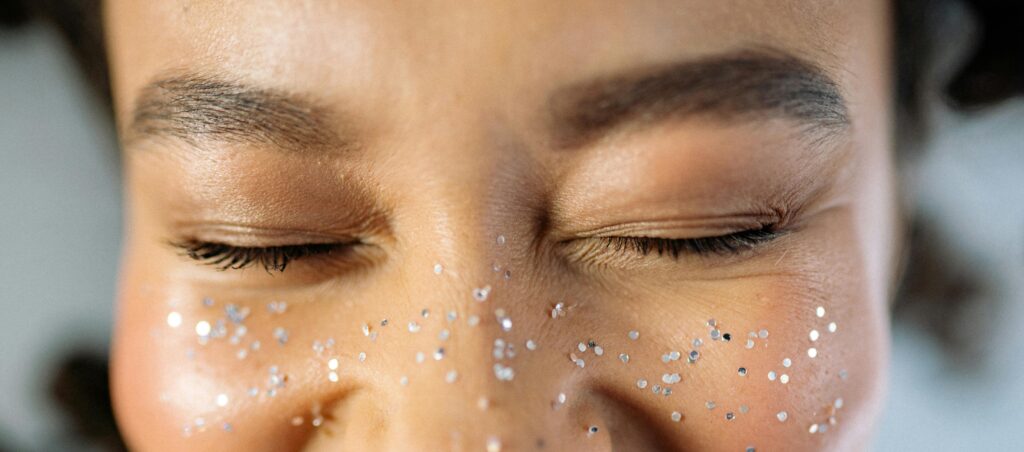
I remember the first time I came to the realization that I should finally (at the age of 30) invest in my eyebrows. I found a filtered photo in my camera roll from when I randomly decided to see how I looked with filtered make-up. It looked really good, which is why I always stay away from filters! With one day of using one I was ready to book a brow appointment. But not just any appointment. My brows were thin and sparse naturally but the filtered image created defined, full brows that I couldn’t achieve without putting makeup on everyday! That’s when I started going down the rabbit hole of “permanent brow makeup,” eagerly searching results for microblading vs ombre brows on dark skin. It’s hard to explain but I always found when I applied makeup to my brows I looked too “done” or it felt too heavy for my face. I wanted to make sure the added pigment to my brows wouldn’t clash with my skin tone or worse, create any side effects. I ended up trying both microblading and ombre brows. There’s alot that I wasn’t aware of and many lessons I learned along the way. So, like many of my articles, hopefully sharing my experience can help others make an educated decision on their personal brow journey.

What Is Microblading?
Microblading is a form of superficial micropigmentation. It involves using a small blade to deposit pigment into the upper layers of the skin, mimicking the appearance of natural hairs. This technique works to create defined, hair-like strokes that enhance the natural brow shape. This meticulous technique requires skill, as each stroke must be tailored to fit the unique contours of your facial structure and natural brows.
Since microblading involves surface-level pigmentation, you do a touch up after your first session after about 4-8 weeks. Then the results typically last between 12 to 18 months. Some people need regular touch-ups to maintain their desired look. In my brow journey I found, for darker skin tones microblading can offer a natural enhancement, but its effectiveness could be less pronounced due to the dense pigment in those with darker skin.

What Are Ombre Brows?
Unlike microblading, ombre brows utilize a shading technique, creating a gradient effect that is lighter at the front and darker towards the tail. This method provides a more filled-in, powdered look that can be as soft or as dramatic as you’d like! Ombre brows involve depositing pigment in a stippling motion, resulting in a gradient that resembles a subtly filled-in makeup look.
A significant advantage of ombre brows is their durability. Because the pigment is deposited deeper, this technique offers a longer-lasting solution compared to microblading brows. Ombre brows are appealing for those looking for a bold yet low-maintenance brow enhancement solution.
My Experience
After being amazed with the potential of my brows from the filtered photo I decided to find a reputable place to get my brows microbladed! I personally liked the look of pigmented strokes and thought they looked more natural than the ombre fill so I felt confident that microblading would be best for me. The session was pretty painful. In the location I went to, the provider who performed my microblading numbed me then removed the numbing to draw out my “perfect” brows. Problem is that there was a language barrier and so getting the shape to my liking took time to achieve. I also felt she was doing a “copy-and-paste” maybe with what most of her clientele liked. I was looking to maintain my natural shape but make my brows fuller. Regardless, she was talented and we eventually got to my desired look (through the intense blade scratching and all).
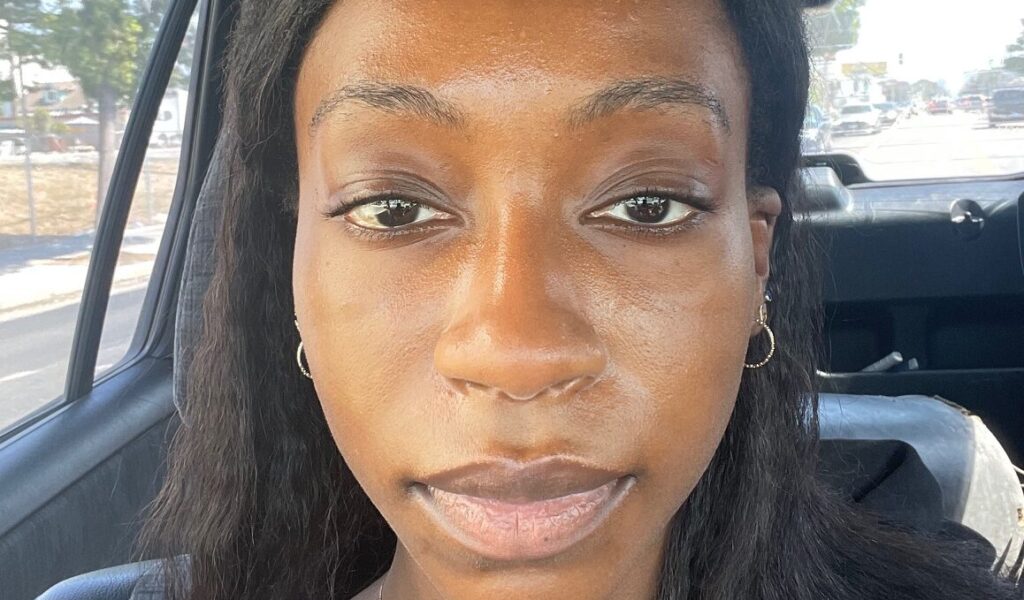
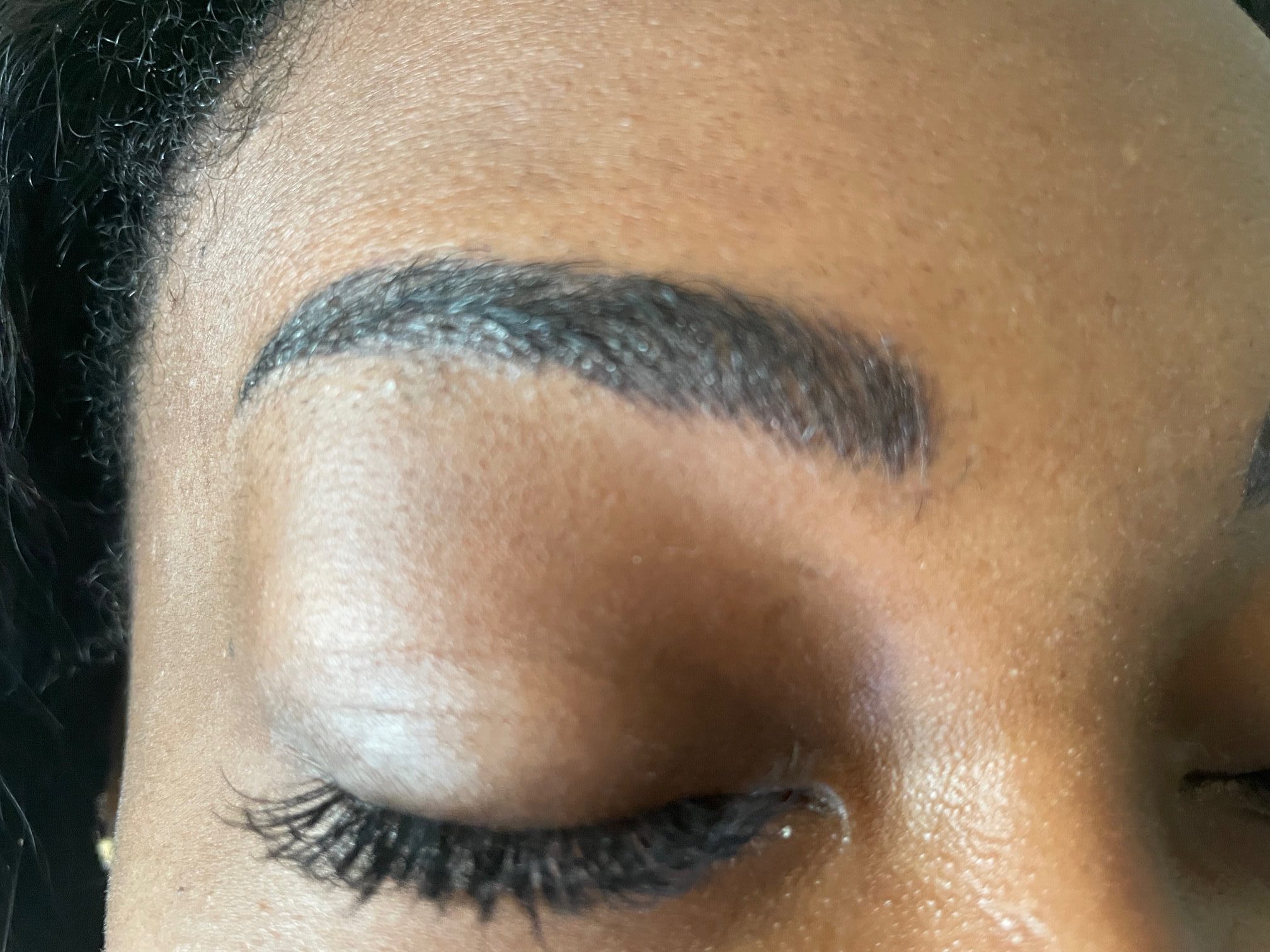
Microblading Is Not For Me
Though it appeared very dark to me at first, I got lots of compliments right after my microblading session. You could see the strokes and my brows were fuller and more defined. However, my provider gave me little to no aftercare instructions afterwards so I was left to search on the internet. I saw instructions that advised not wetting the brows (dry method) to suggesting you wet the brows(wet method)! I opted to not wet it the first time but sadly found that, weeks later as the scabs went away and the pigment returned, it was faded and barely there in some places. I thought it was because it was my first session but the second session’s results were also lackluster even though this time I attempted the “wet” method. I also noticed my skin started thickening in the strokes that were etched into my skin, almost like mini scars. In doing my research, I realized two things:
- my skin was too oily to maintain the ink from the microblading session
- my increased melanin and thickened skin made me more susceptible to scarring
Microblading for Dark Skin
Microblading can offer beautifully defined brows that look natural, blending seamlessly with your existing brow hairs. Sometimes the natural appearance of microblading can perfectly complement dark skin by accentuating the brow’s natural contour.
However, microblading may not be as effective on oily skin textures, which are more common among people with darker skin tones. Oily skin can cause the pigment to fade more quickly, meaning more frequent touch-ups may be necessary to retain the defined look. Recognizing this characteristic is essential to achieving the desired long-term aesthetic.
Another potential downside includes the potential for scabbing and color change as the brows heal. Instructions for aftercare are vital to ensuring that these side effects are minimized but can still be a possibility for those with more melanin in their skin.
Advantages of Ombre Brows on Dark Skin
Ombre brows provide a fuller and more filled-in appearance, which can complement darker skin tones by delivering a bolder brow statement (if that’s what you’re looking for). This method can be adjusted to suit your preference, whether you want a soft and natural look or a more dramatic finish. I opted for a softer approach, mainly wanting to just fill in where I had gaps in hair. The gradient shading effect also helps to minimize inconsistencies in skin tone, which can be a concern with microblading in darker skin.
Since ombre brow techniques involve deeper pigmentation, they are especially promising for individuals with oily skin, where longer-lasting cosmetic results are desirable. Ombre brows can withstand the challenges posed by excess sebum on the skin’s surface. This helps with longevity and makes ombre brows an excellent option for those with oilier skin profiles like myself!
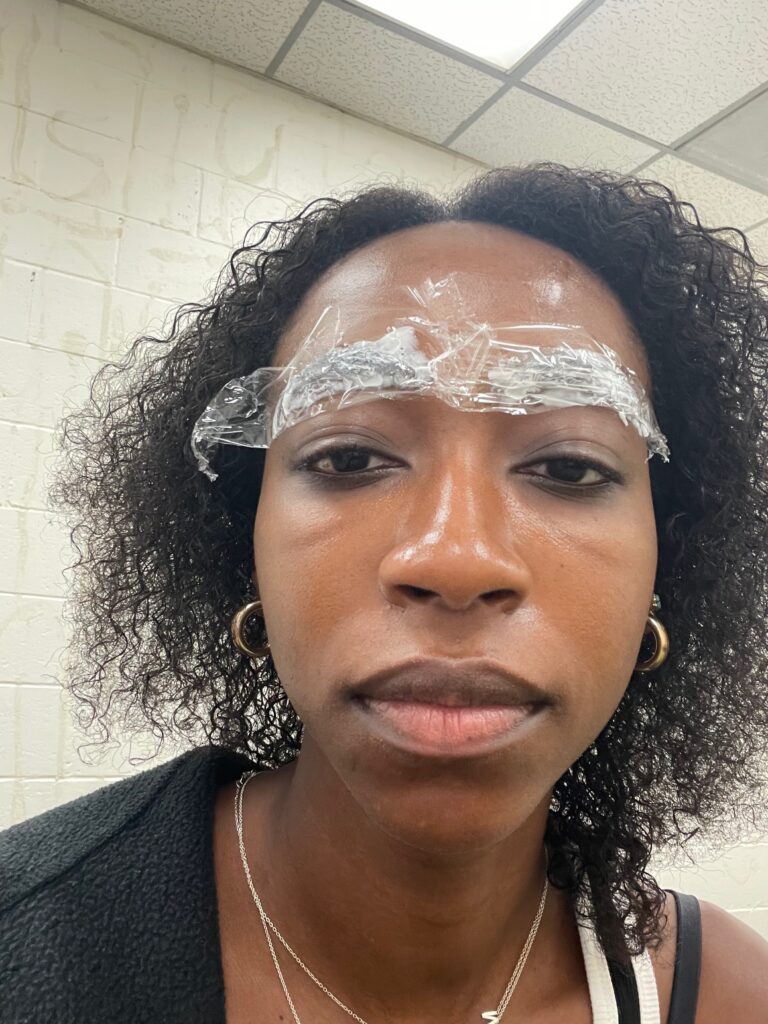
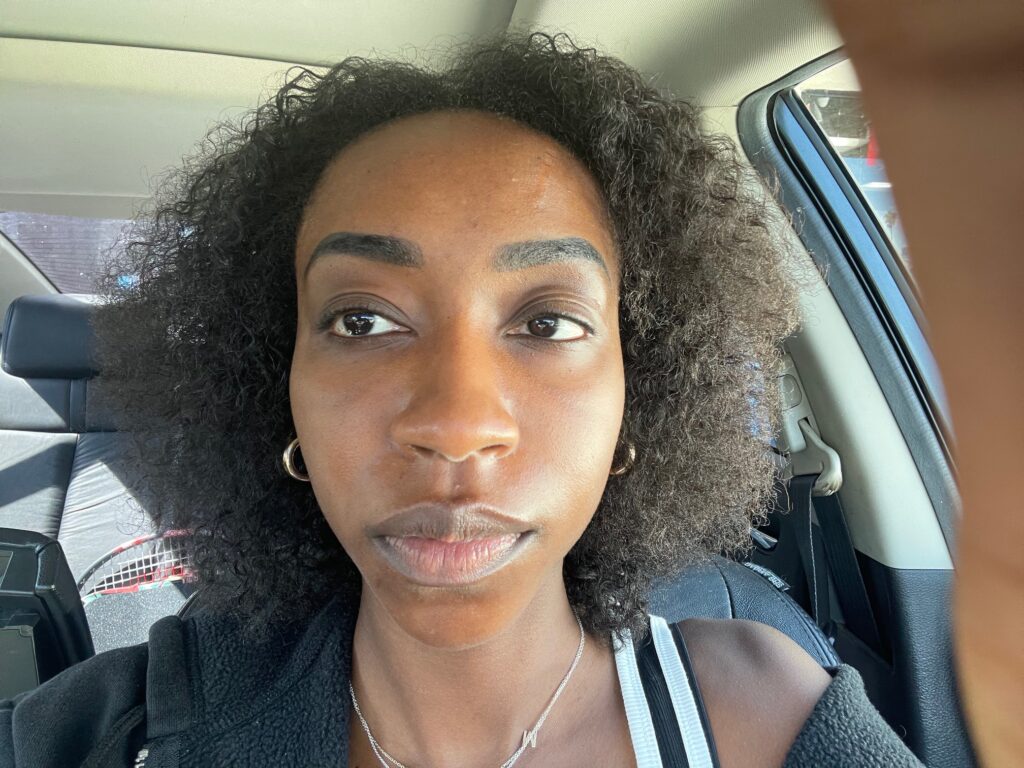
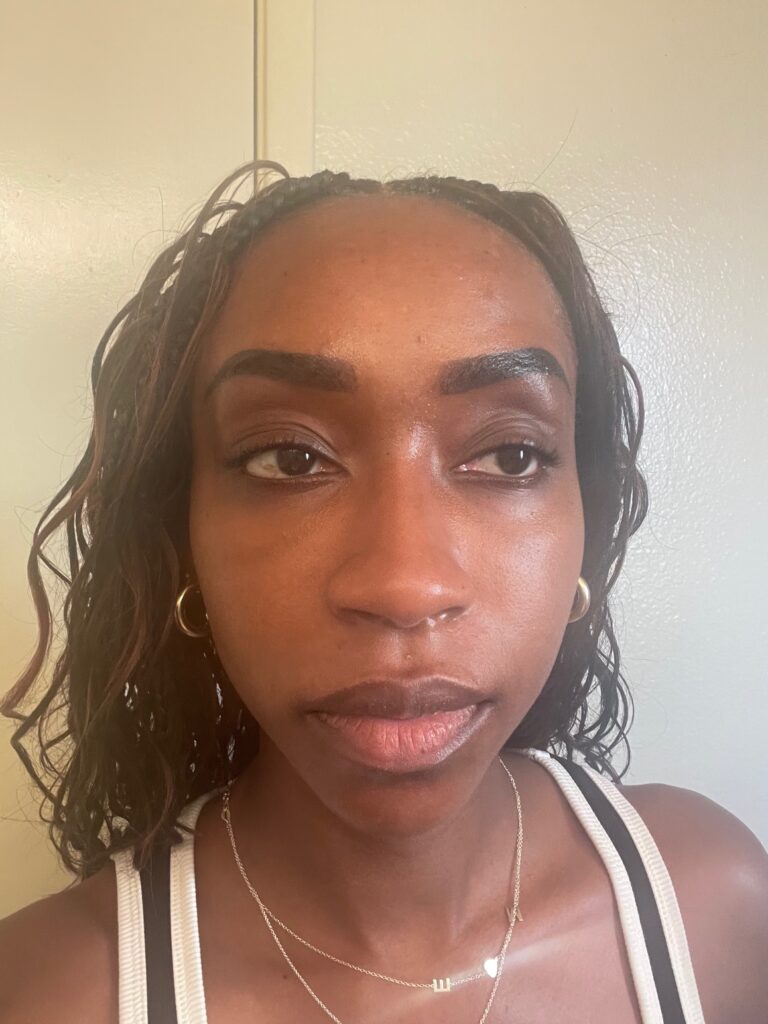
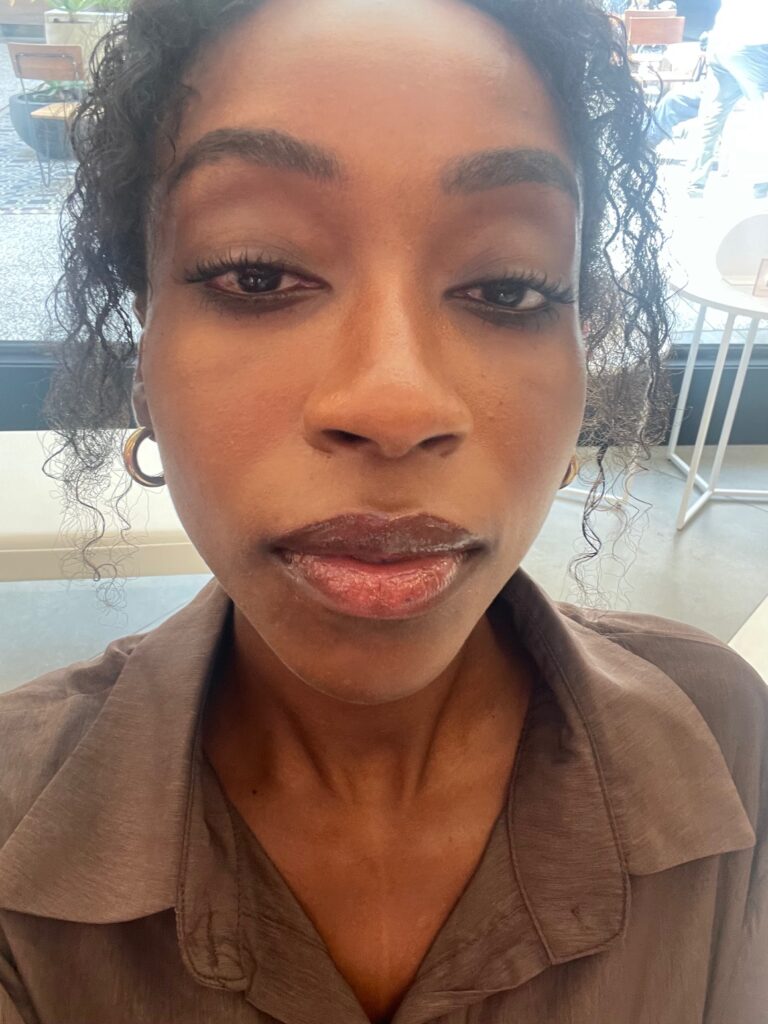
Skin Type Considerations
Regardless of skin tone, when choosing between microblading and ombre brows, consider your skin’s characteristics. Oily skin might affect the longevity and appearance of microblading strokes, while ombre brows generally hold up better across different skin types. As microblading is more susceptible to fading on oily skin, you may need frequent touch-ups if you fall in this category. On the other hand, the ombre technique’s stippling and depth of pigment make it a popular choice for consistent results.
Beyond oiliness, the Fitzpatrick scale—a dermatological tool used to classify skin types—indicates that darker skin, particularly those approaching a type six, benefits substantially from a careful approach to brow pigmentation. Techniques like ombre shading help reduce the risk of discoloration, enhancing the pigment’s appearance and adherence.
Finding the Right Practitioner
Selecting an experienced brow artist familiar with working on your specific skin tone and type is crucial. My provider initially did tell me that ombre would work best for me but I wasn’t a fan of the ombre look so opted against it. I thought she meant she preferred the ombre look but now I realize she was foreseeing that the microblading wouldn’t last on my skin. In most cases, it’s best to hear out your provider as they tend to know what works especially if they’ve been practicing for a while. Look for practitioners who understand the nuances of pigmentation and possess solid reviews. Trustworthiness is paramount when it comes to anything semi-permanent.
Also Read: UV Radiation & Its Effects On Each Skin Tone
References:
https://pmc.ncbi.nlm.nih.gov/articles/PMC7982014
https://www.ellebrow.com/microblading/microblading-guide/microblading-for-dark-skin-tones
https://www.blackbloom.studio/microblading-vs-ombre-powder-brows/





You must be logged in to post a comment.